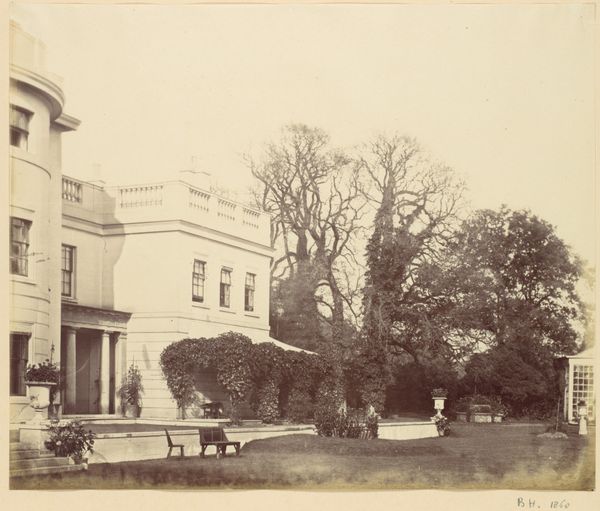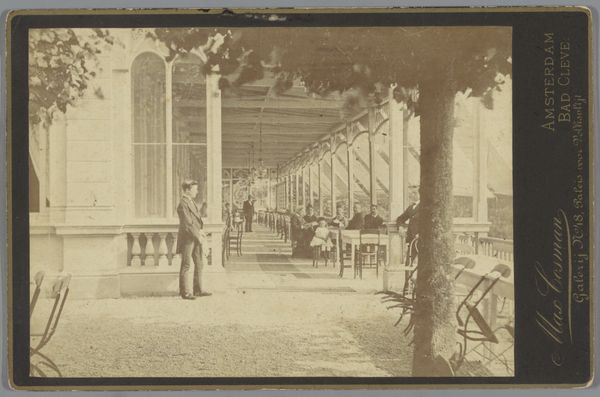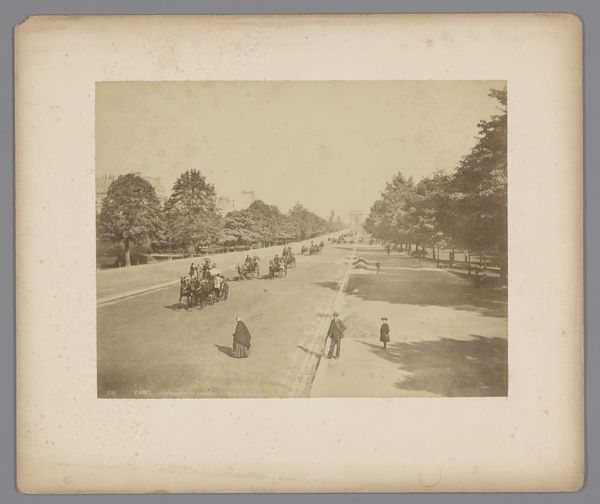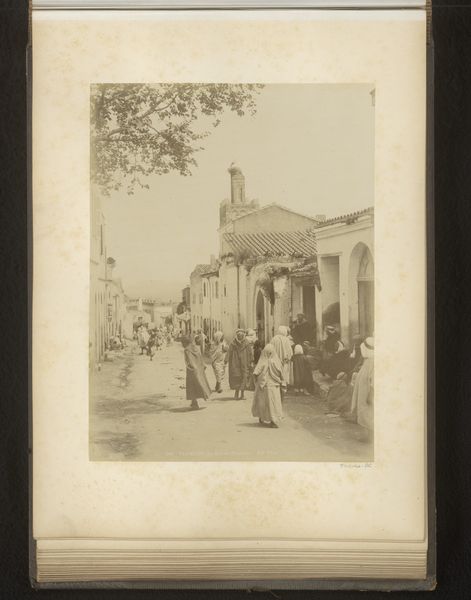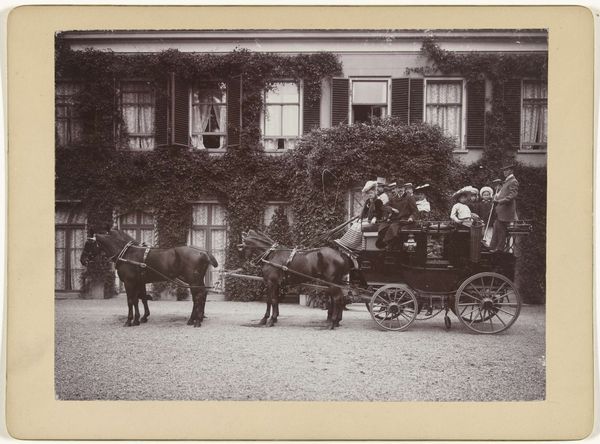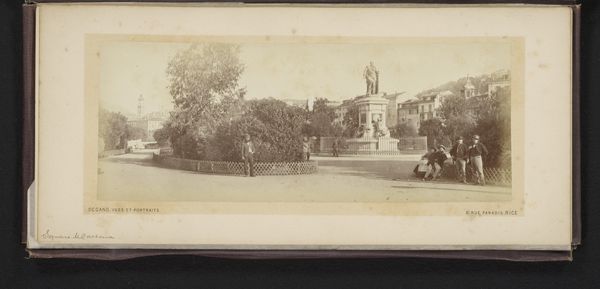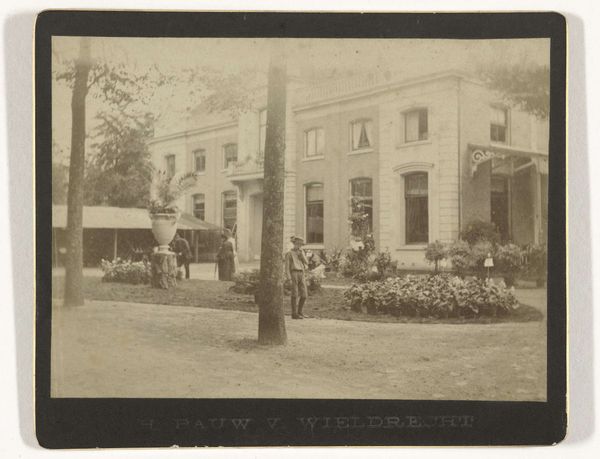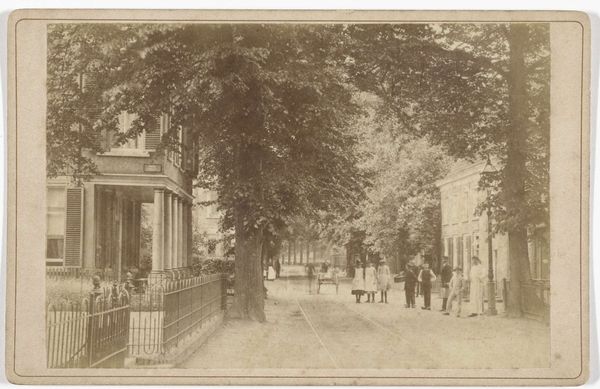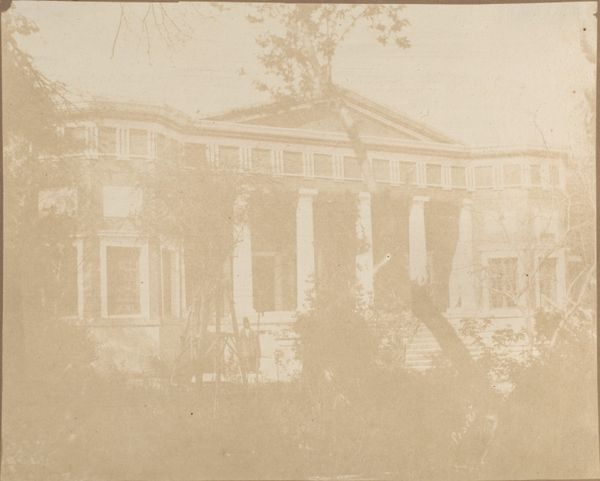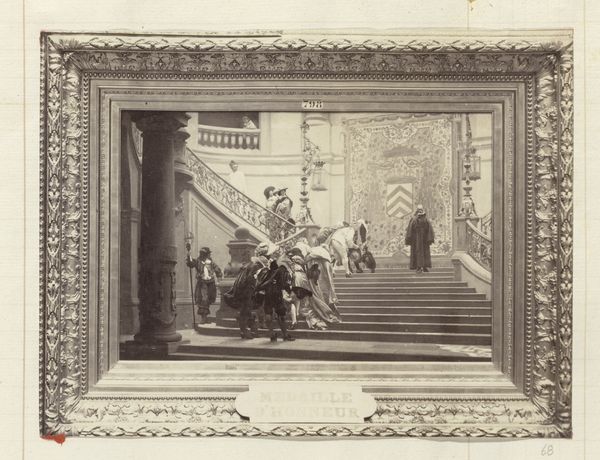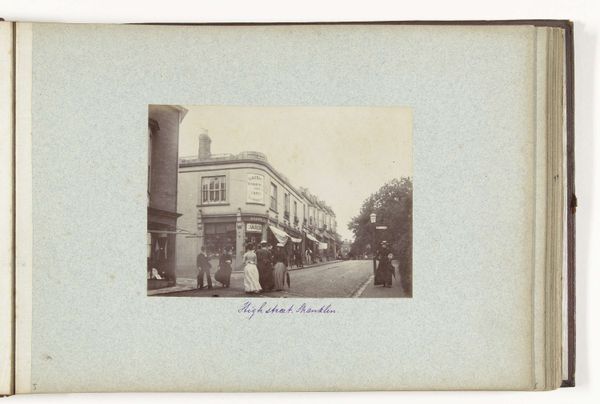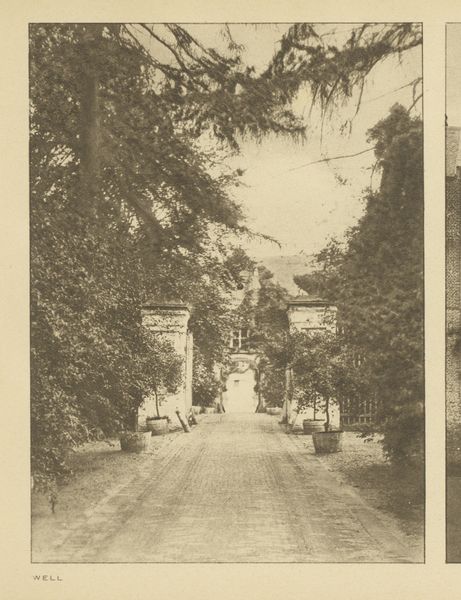![[Lord Brougham and his Family, Cannes] by Charles Nègre](/_next/image?url=https%3A%2F%2Fd2w8kbdekdi1gv.cloudfront.net%2FeyJidWNrZXQiOiAiYXJ0ZXJhLWltYWdlcy1idWNrZXQiLCAia2V5IjogImFydHdvcmtzLzU5M2Y4NGE4LWQwZGQtNDY4OC05YjQ2LTljZmI4YjE4ZThhZS81OTNmODRhOC1kMGRkLTQ2ODgtOWI0Ni05Y2ZiOGIxOGU4YWVfZnVsbC5qcGciLCAiZWRpdHMiOiB7InJlc2l6ZSI6IHsid2lkdGgiOiAxOTIwLCAiaGVpZ2h0IjogMTkyMCwgImZpdCI6ICJpbnNpZGUifX19&w=3840&q=75)
Dimensions: Image: 24.8 x 34 cm (9 3/4 x 13 3/8 in.)
Copyright: Public Domain
Curator: The stillness is striking. A hushed quality permeates this photograph by Charles Nègre. Editor: Indeed. Its visual architecture leads the eye straight to the family group. Their poses, however, are quite rigid. It feels like a carefully constructed stage tableau. Curator: Precisely. This is '[Lord Brougham and his Family, Cannes]', an albumen print dating to 1862. Consider albumen, derived from egg whites. It's coated onto paper to create this distinctive image. Think about the labor invested in each print, the photographer navigating collodion processes in mobile darkrooms, and the burgeoning culture of photographic portraiture. Editor: The tonal range here is limited but masterfully used. The architectural setting--the columns and symmetrical arrangement of the villa--serves to underscore the status of the sitters. It's almost neoclassical in its structured formality. The subdued palette adds to the image's sense of timelessness. Curator: Nègre was innovating new ways of capturing images in his lifetime. This is not mere documentation, but a conscious shaping of the narrative. Notice, for instance, how the landscape behind them feels equally staged, tamed—mirroring their control of space and status. Editor: The balance between light and shadow enhances the contours of their clothing and subtly defines each figure. Yet, they're all contained within this rather severe frame, dominated by horizontal lines of balustrade and the powerful vertical columns. Curator: I find it incredibly revealing how these types of portraits became integral to constructing bourgeois identity. It became a mechanism for class to further solidify during that era, visually proclaiming belonging and affluence. Editor: And by isolating such elements, we arrive at a profound insight, that Nègre's piece functions beyond the purely documentary. The composition, texture, and historical framework blend into a study of the socio-economic structures prevalent at that time. Curator: This approach has altered my perception. It encourages you to recognize historical portraiture's purpose in more than likeness alone. Editor: Mine, too. I am left contemplating how Nègre uses subtle, calculated details to underscore this portrait's silent commentary on authority.
Comments
No comments
Be the first to comment and join the conversation on the ultimate creative platform.

